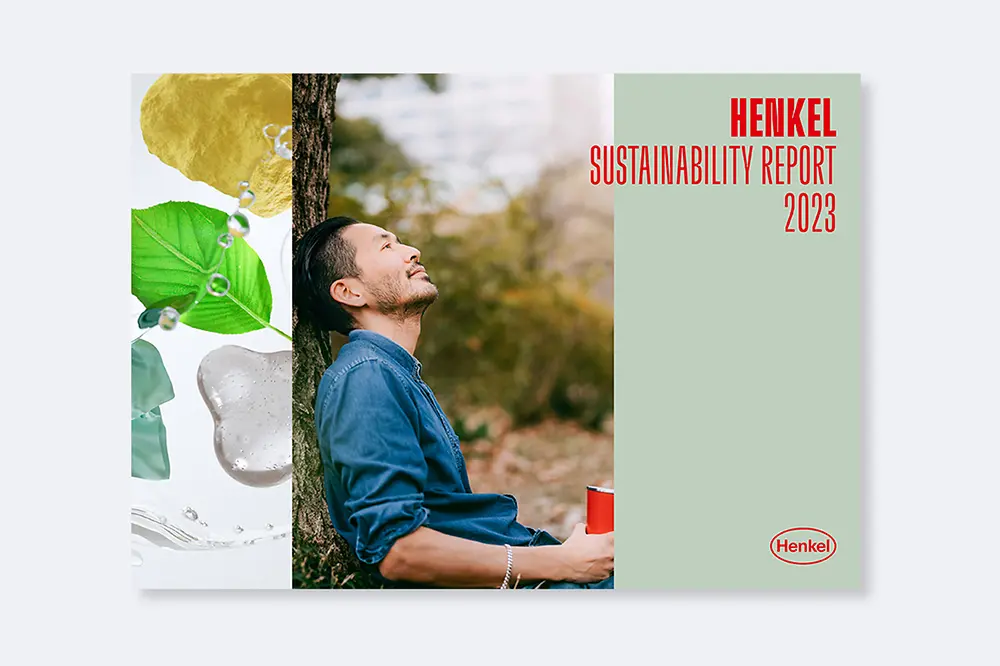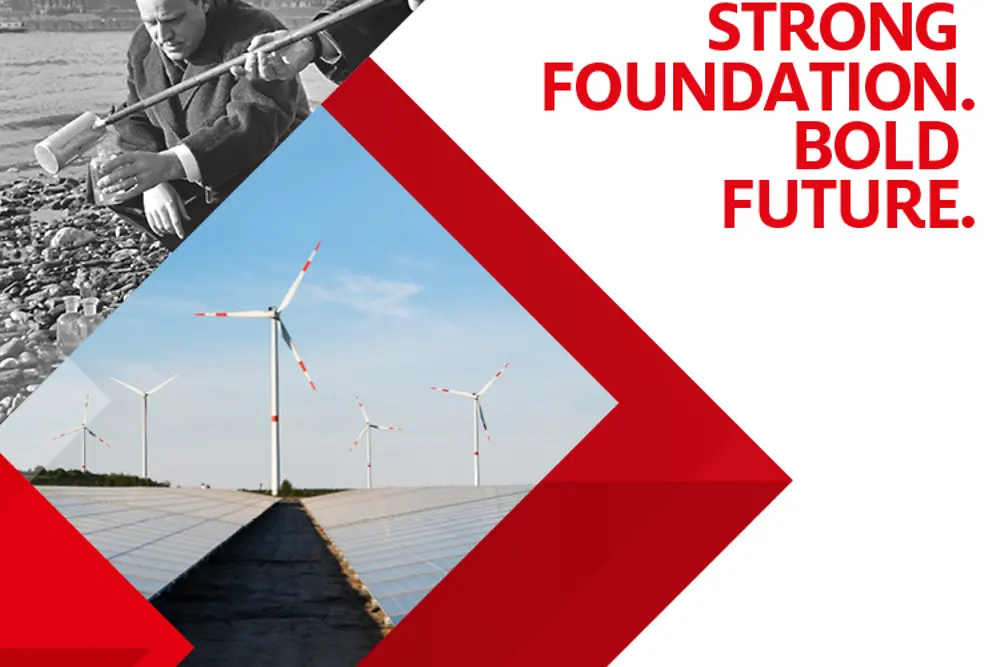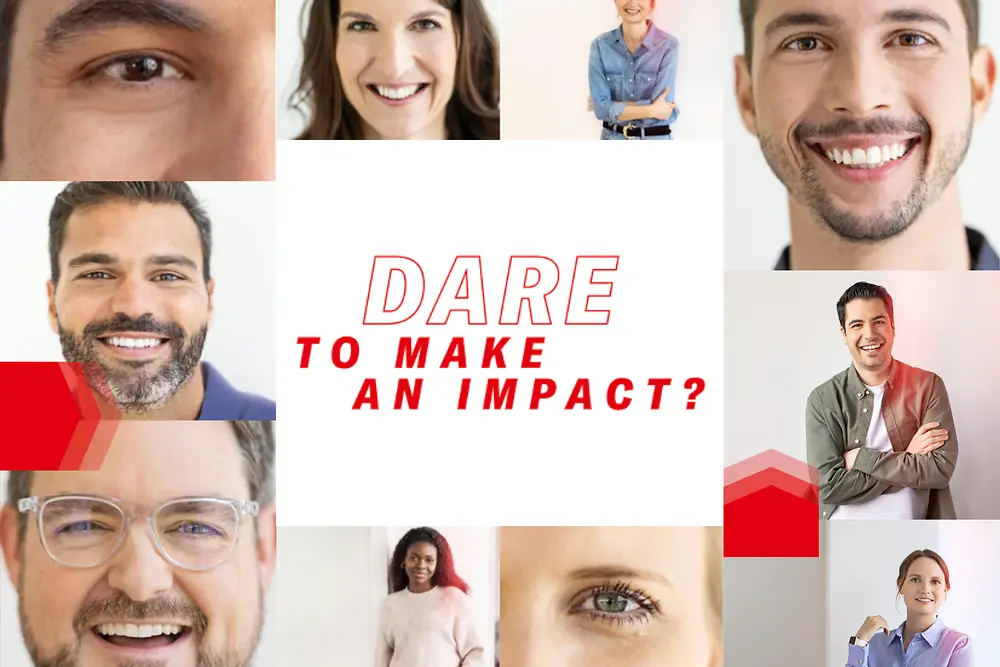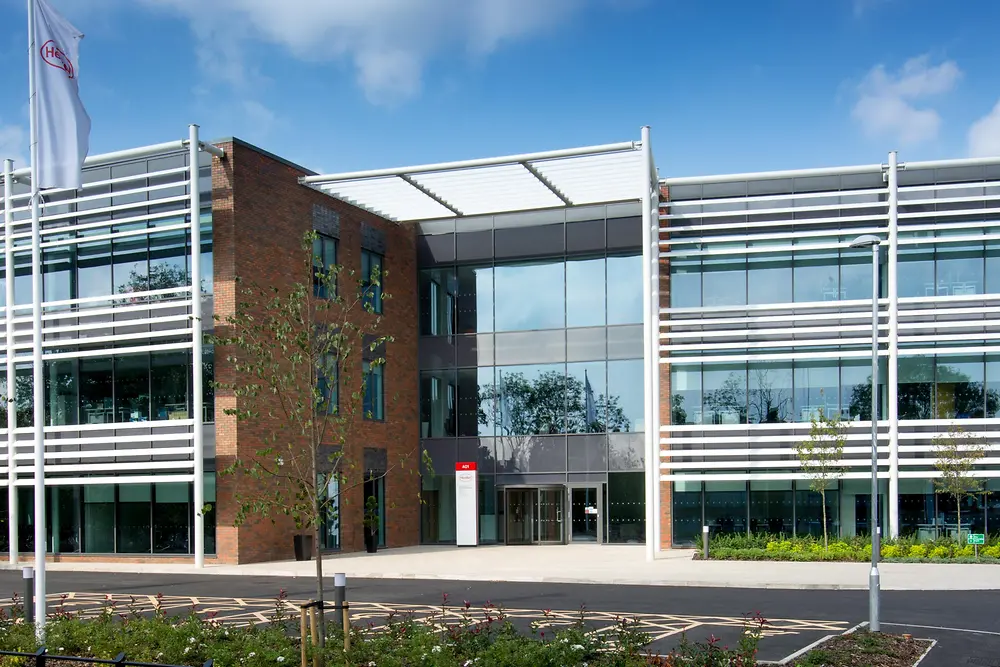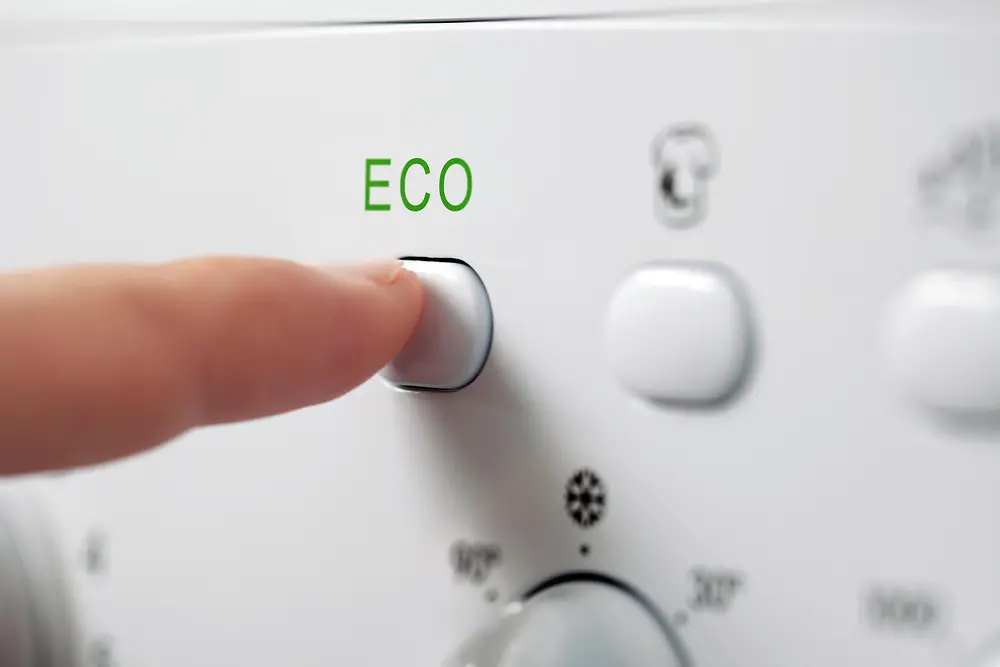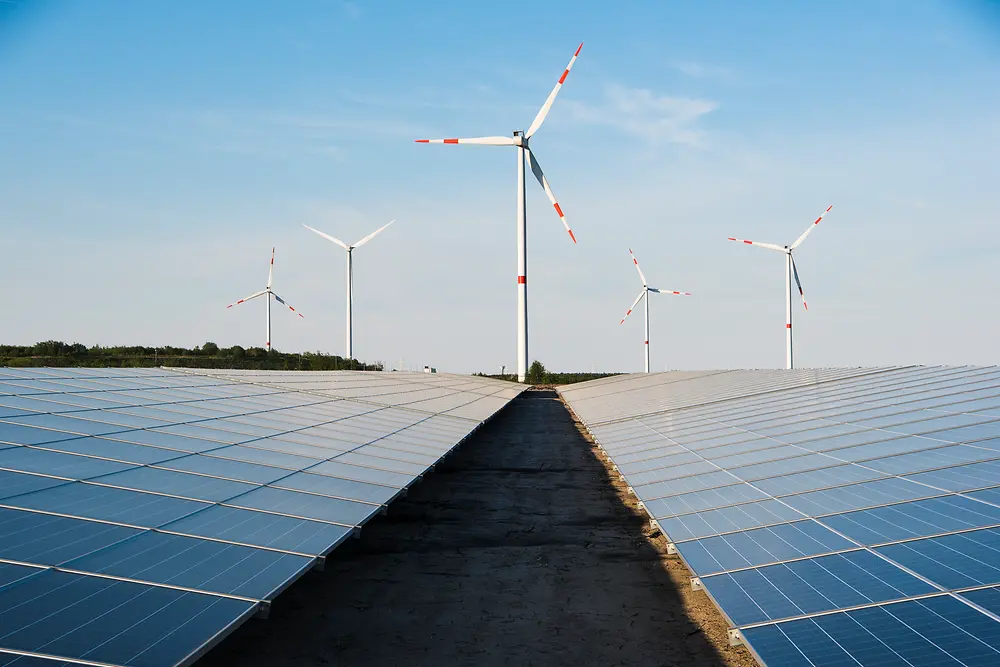Learn more about Henkel Brands & Businesses in UK & Irelands: Includes useful information about the brands, technologies and latest innovations in our business areas: Adhesive Technologies and Consumer Brands.
Replacing energy from fossil fuels with renewable, CO2-free alternatives
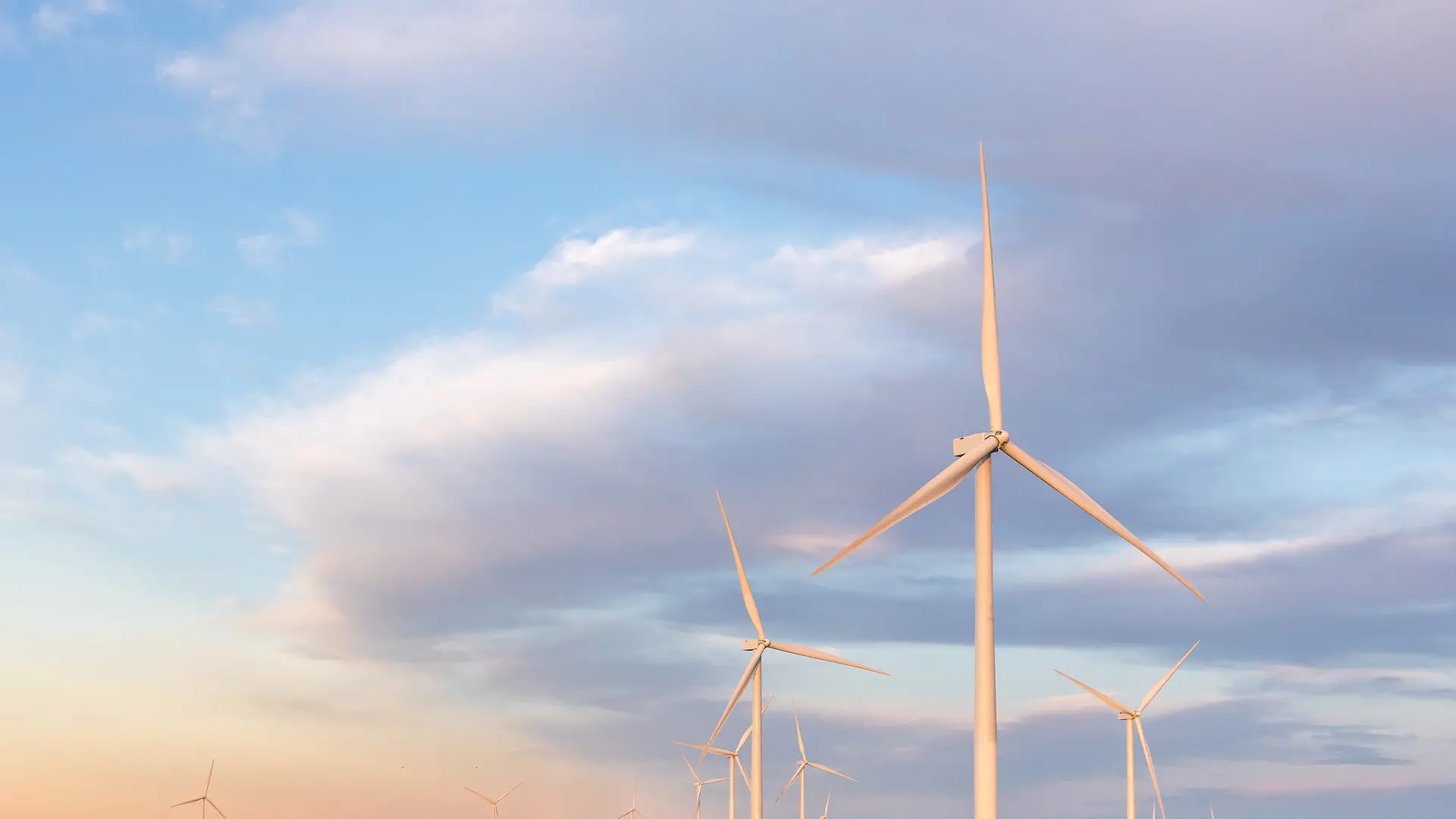
Renewable energy is a major driver in the fight against climate change. For Henkel, the switch to CO2-free energy sources is one of the main levers in our efforts to become climate-positive by 2030. Petra Spallek, Corporate Vice President Purchasing, explains how our company is pursuing its concrete targets for using more green power.
Petra, Henkel wants to become climate-positive. How is the Purchasing team contributing to this?
Becoming climate-positive is about supporting climate protection by replacing fossil-fuel energy with climate-neutral alternatives like solar or wind power – and then supplying any extra CO2-free energy that we don’t need to third parties. Alongside our efforts to generate green energy at our own sites, our Purchasing team plays a key role in this because we make decisions about everything our company buys, including energy. Henkel’s vision of becoming climate-positive is underscored by ambitious targets for using more green power to make our products. We aim to reduce the carbon footprint of our production by 65 percent by 2025. To achieve this, Henkel is going to improve energy efficiency and reduce energy consumption at our sites. In addition, we aim to get 100 percent of the electricity we use in production from renewable sources by 2030. Strategic purchasing decisions make a massive contribution here because we can only get this green electricity by negotiating long-term agreements with local and national providers.
What are the biggest milestones you have achieved so far?
We’re really proud to have signed a large-scale Virtual Power Purchase Agreement (VPPA) in the US in 2020. It commits us to purchasing 50 percent of the energy generated at a new wind farm in Bee County, Texas. This capacity is equal to 100 percent of the electricity that we use in our operations in the US, which covers 30 production sites. It’s a fantastic moment in our efforts to strengthen our contribution to climate protection and support the switch to renewable energy. The contract is the result of close collaboration between our Purchasing and Finance teams, and shows how innovative we can be in our approach to sourcing renewable energy. It’s a great achievement – and it’s also a starting point for evaluating the concepts for other regions.
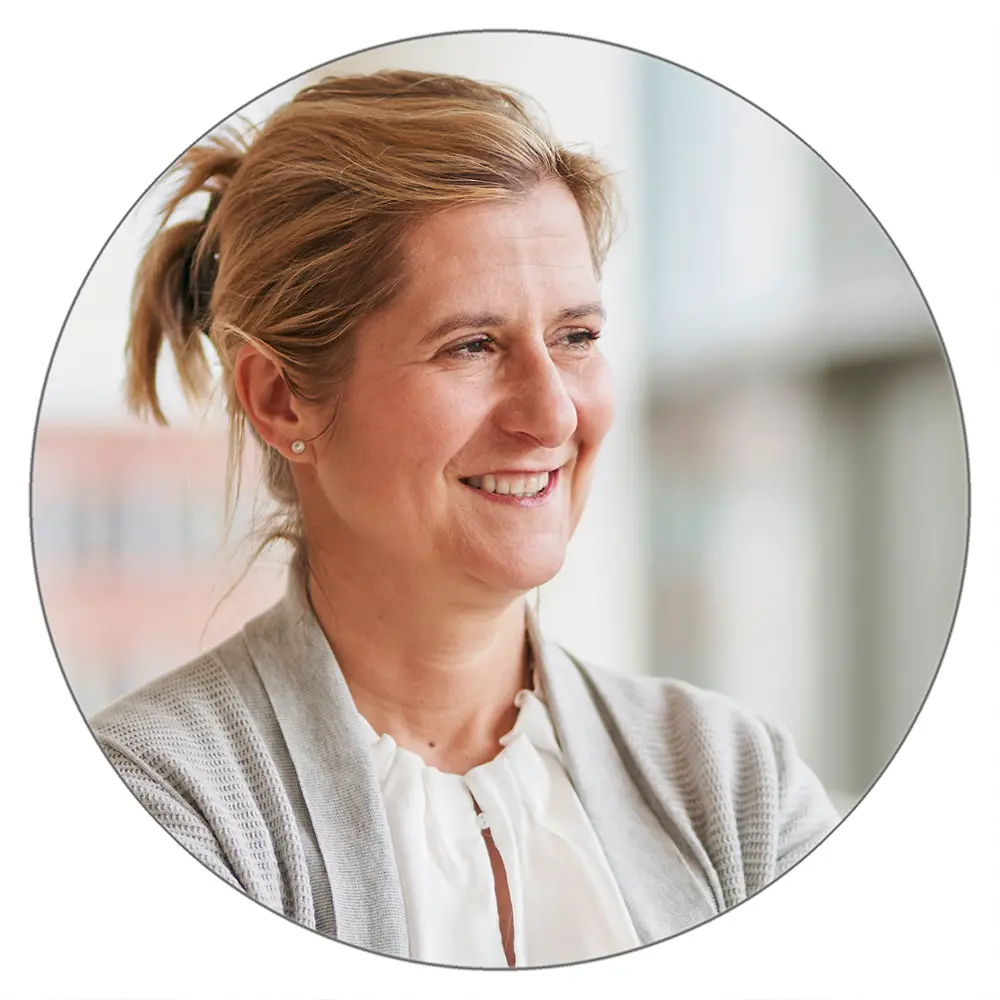
Flexible and country-specific approaches are the only way to achieve our goal of getting 100 percent of the electricity we use in production from renewable sources by 2030
Petra Spallek, Corporate Vice President Purchasing at Henkel
How exactly do VPPAs work?
VPPAs are contracts between a renewable energy producer and another party – in this case, Henkel. We have agreed to purchase a certain amount of energy from the producer, and this electricity will be fed into the national supply grid. In this way, we contribute to building up additional capacities for generating renewable energy. It’s called a “virtual” agreement because we do not directly transport the energy from the wind farm into our sites. Of course, VPPAs are just one element of our approach to accelerating the transition to renewable energy at our sites around the world.
What else is Henkel doing to accelerate the transition to renewable energy?
Every country has different infrastructure and regulations for the energy sector, and the unique weather conditions in each country are also a major factor in local energy provision. That’s why flexible and country-specific approaches are the only way to achieve our goal of getting 100 percent of the electricity we use in production from renewable sources by 2030. We’re combining three different models for sourcing renewable energy worldwide: On-site production, direct purchase, and virtual coverage.
Can you give an example of on-site green power generation?
Our site in Kurkumbh, India, is a great example. It’s the biggest adhesives manufacturing site in India and opened in 2020. We’ve installed around 7,000 square meters of solar panels on the roof, which generate more than 1,000,000 kilowatt hours of renewable energy and save approximately 800 tons of CO2 each year. This shows how we integrate our ambitions for efficiency and renewable energy as early as the design phase when we build new production sites. And plans are already in place to add a further 2,000 square meters of panels at this site, and to enhance our share of green power by purchasing solar power direct from an external energy provider.
What are the next steps?
As mentioned, we’re constantly looking for ways to contribute to tackling climate change and drive progress toward our vision of becoming a climate-positive company. This involves close collaboration between teams and departments across our company. Our Supply Chain team, for example, is leading our efforts to hit our targets for improving energy-efficiency and cutting emissions at our production sites – and our CO2 reduction targets were approved by the “Science Based Targets initiative” in March 2020 in recognition that they are consistent with the Paris Climate Agreement. Alongside this, our Purchasing team is leading our company’s efforts to replace energy from fossil fuels with renewable, CO2-free alternatives. Together, everybody at Henkel can contribute to supporting progress toward our ambition. And I’m excited about what Henkel and its partners can achieve.
